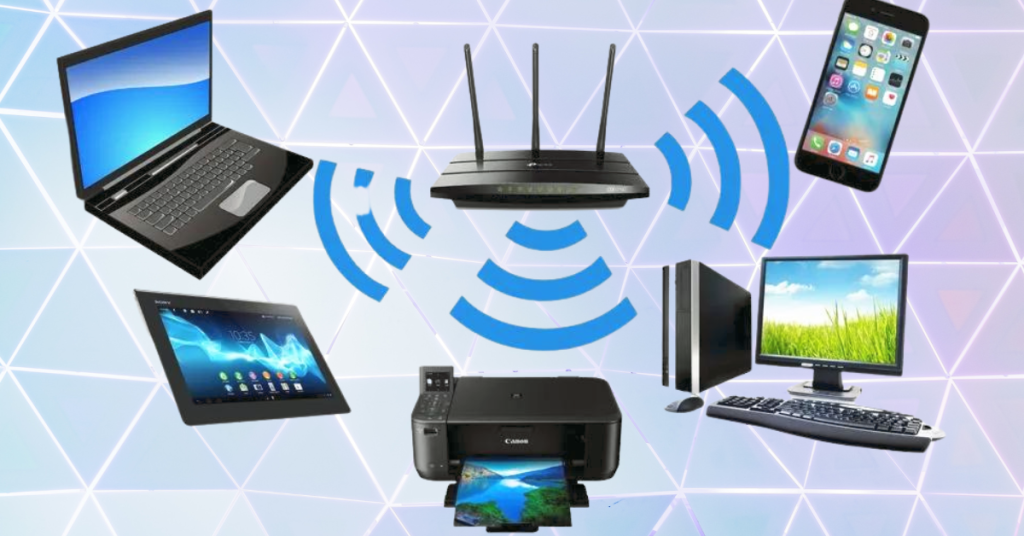Wireless LANs (WLANs) are the latest technology in networking. They use radio waves instead of wires to connect devices, which means they can cover a wider area and provide a faster connection. In this blog article, we will explore wireless LANs and the different types available. We will also discuss the benefits and drawbacks of each type and give you an idea of which might be best for your needs.
What Is Wireless LAN
WLAN is a technology that uses radio waves to connect devices such as laptops, phones, and other devices in a local area network. The term “wireless” refers to the fact that these networks don’t use cables to connect devices.
The main difference between wireless LAN and Wi-Fi is that WLAN uses short-range radio waves while Wi-Fi uses long-range radio waves. This means wireless LAN can connect devices in closer quarters than Wi-Fi.
Another major difference is that wireless networks can typically operate at lower speeds than Wi-Fi networks. This is because they rely on shorter-range signals, while Wi-Fi uses longer-range signals.
Wireless LAN vs. wifi: What’s the Difference?
Wireless LAN vs. wifi: What’s the Difference?
WLAN is a wireless technology in networking applications such as home and small office networks. It employs radio frequency (RF) signals to connect devices within a closed area, such as an office or a home. The main difference between Wi-Fi and WLAN is that Wi-Fi uses the same radio waves as those used in cellular phones and other wireless devices. In contrast, WLAN uses dedicated RF channels to communicate.
Wifi is more common than WLAN because it uses less energy and can cover wider areas. This means you can connect your laptop to a network at home, for example, and use the internet simultaneously as you talk on the phone. However, if you want to use your laptop wirelessly in an open space, like a café or an airport terminal, you’ll need to use a WLAN.
How Does a Wireless LAN Work?
A WLAN is a broadband networking technology that uses radio waves to communicate between computers and other devices. Wifi is a term used for networks that use the same frequency as microwaves, which ranges from 2.4GHz to 2.48GHz in the US.
A wireless LAN can be divided into two types: client-based and infrastructure-based. Client-based WLANs, such as laptops and tablets, rely on individual clients to connect to an access point (AP) or router. Infrastructure-based WLANs use a wired network to connect APs so multiple devices can share resources, such as bandwidth and channels.
Advantages of Wireless LAN over wifi
WLAN technology uses radio waves to create an area where devices can connect wirelessly. This differs from WiFi, which uses radio waves to create a network connection between devices.
There are several benefits to using WLAN instead of wifi:
- WLAN is faster than wifi. WLAN transmits data through the air, while wifi relies on cables to transport the data.
- A wireless LAN can cover much more than a wifi network. Wireless signals travel farther and penetrate more obstacles than radio waves transmitted over a cable.
- WLANs are less likely to be interrupted by interference from other electronic devices or nearby appliances. In contrast, wifi networks can be disrupted by objects such as power cords or other metal objects that can cause electromagnetic interference (EMI).
Disadvantages of Wireless LAN over wifi
Wireless LAN has numerous advantages over Wi-Fi. WLANs operate within a specific range, making them easier to use in tight quarters. They also offer better security because data is not sent over the open Internet. Another advantage of WLANs is that they can be more reliable in difficult environments, such as near high-traffic areas or inside buildings. Wi-Fi can also suffer from interference issues and slow down when there is a lot of traffic.
Conclusion
WLAN is a wireless networking technology that allows devices to connect without wires. Wireless LAN devices can be placed anywhere in a room, whereas wifi devices can only be used near an access point (or router). WLAN is frequently more reliable than wifi and has faster data speeds.





